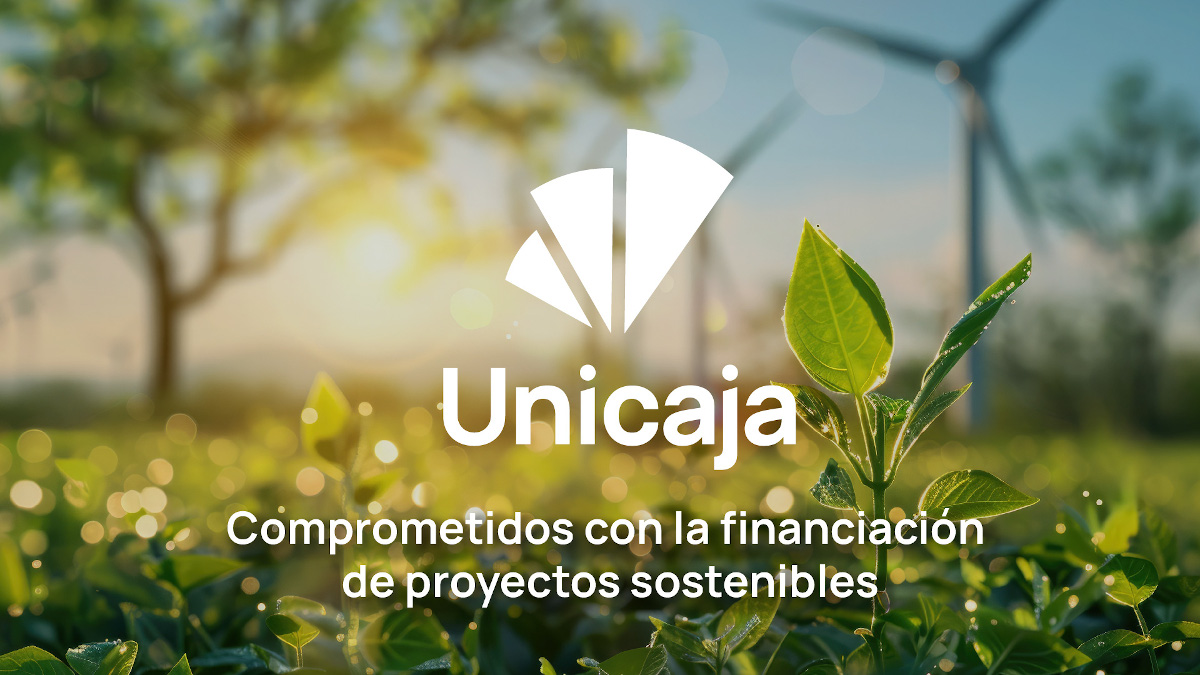Unicaja Banco has published the annual report ‘El sector agrario en Andalucía 2021’ (Annual Report on the Agricultural Sector in Andalusia), which reaches its 31st edition. The document has been prepared, as in previous editions, by Analistas Económicos de Andalucía.
The main goal of this report made by Grupo Unicaja Banco’s research company is to provide an analysis of the situation and recent evolution of the agricultural and agri-food sector in Andalusia.
The agricultural sector and the agri-food industry are key pillars of Andalusia’s economic structure, not only because of their contribution to the generation of wealth and employment (representing altogether around 10% of the regional GVA and employment), but also because of the role they play in the territorial cohesion and balance, helping to maintain population in rural areas. In Andalusia, the rural population accounts for almost one quarter of the total population.
The report starts with a prologue and a short introduction, and then the document is divided into four chapters. The first one focuses on the dimension of the agricultural sector, analyzing, inter alia, the development of the Common Agricultural Policy (CAP), the evolution of the main indicators of the employment market and the evolution of agricultural productions.
The second chapter presents estimations of macroeconomic data in 2020, one of the main contributions of the work, and a detailed analysis is provided on the evolution of the agricultural income in Andalusia and in each province.
The third chapter focuses on the analysis of the agri-food industry in the region, trying to highlight the importance of this industrial branch through its main figures (turnover, employment and business structure), including exports of agri-food products and food consumption.
Finally, the report includes a chapter about the main findings and conclusions, related to 2020 estimations of agricultural income and production, as well as the main aspects related to the agri-food industry.
Agricultural Income
According to the estimations of Analistas Económicos de Andalucía, the Andalusian agricultural income in 2020 amounted to €8,086.7 million (28.5% of Spain’s agricultural income), a 3.7% decrease compared with 2019.
In the average for 2020, the number of jobs in the agricultural sector is 3.7% higher than the previous year, representing slightly more than one third of the jobs in this sector in Spain.
As for its provincial distribution, Almeria continues to be the province with a higher contribution to the regional agricultural income (29.8%), followed by Seville (15.8%), Granada (12.4%), Cordoba (10.9%), Huelva (10.7%), Jaen (10.6%), Malaga (5.6%) and Cadiz (4.3%).
Compared with 2019, the agricultural income has decreased in five of the eight Andalusian provinces, at rates ranging from -6.0% in Cordoba to -31.6% in Jaen. It has increased in Granada (6.6%), Seville (8.3%) and Almeria (10.8%).
Agricultural Production
The value of the agricultural production (crops and livestock) reached €11,461.4 million in 2020, representing around 22.0% of the Spanish production, a share exceeding the relative weight of the whole of the Andalusian economy in the total national (around 13.5% of the GDP). This amount represents a decrease of 2.3% over 2019, due to the fall in production (-3.8%), as prices have risen by 1.5%.
The value of crop production has decreased by 3.4%, representing 81.7% of the value of the agricultural production in Andalusia. In particular, it stood at €9,363.0 million in 2020, accounting for 30.8% of the country’s production. Compared with 2019, the decrease responds to less cultivations (-5.3%), as prices rose by 2.0%.
As per cultivations, vegetables (41.7% of the value of Andalusian crop production) and olive groves (olive oil 13.1% and olives 12.5%) are a reference for Andalusia. Fruit trees (11.7% non-citrus fruits and 8.3% citrus fruits) and cereals (5.2%) also represent a significant contribution. The region’s contribution to the national production of olive oil (82.3%), vegetables (42.7%), fruits (39.7%) and industrial crops (33.9%) is to be remarked too.
With regard to 2019, an increase has been noticed in the production value of vegetables, fruits -mainly citrus fruits-, olives or cereals. On the contrary, there has been a drop in the valuation of olive oil (-44.9%). It should be reminded that the 2020 estimations value the 2019-2020 campaign, in which there was a sharp decline in olive oil production, whereas in olive production, the 2020-2021 campaign is valued.
The production of vegetables, olives, citrus fruits, cereals, industrial crops, forage crops and pulses have increased compared with the previous year, with olives growing by more than 40% and olive oil production falling by 38.7%.
The rise in the prices of fruits -especially citrus-, cereals, cut flower, pulses and wine would compensate the fall in the prices of olive oil, olives, potatoes or industrial crops, while the prices of vegetables remain stable.
By provinces, Almeria represents 29.4% of the value of the Andalusia’s crop production, followed by Seville (16.8%), Granada (12.2%), Huelva (11.6%) and Jaen (10.3%). The production value has decreased in five provinces and has grown in Almeria (9.0%), Seville (6.1%) and Granada (4.8%).
With regard to livestock production, in 2020 its value reached €2,098.4 million (10.5% of the national production), growing by 2.9% compared with 2019. This increase is due to the rise in productions (3.7%), especially in cattle, whereas prices fell by 0.8%, mainly in live animals and beef and veal.
As for the provincial distribution, Seville (23.4%) and Cordoba (18.9%) are those which make a higher contribution to the value of the regional livestock production, followed by Granada (12.6%) and Malaga (12.2%). In 2020, the value of the production has increased in all provinces but Huelva (-2.4%), with relative rises in Granada (6.3%) and Almeria (5.7%) to be highlighted.
Agri-food Industry
As at 1 January 2020, there were in Andalusia 5,599 companies in the food and drink sector, 18.3% of the total national and more than one fifth of the region’s manufacturing industry.
The turnover of the food and drink industry in Andalusia reached €17,432.4 million, representing 22.0% of the region’s industry. Andalusia is the second region by turnover in the agri-food industry. The number of employees is close to 60,000 (around one quarter of the industrial employment).
Disaggregation by sectors shows that oil and fat industry concentrates 35.8% of the total turnover of the food sector, followed by drink manufacturing (15.5%) and meat processing industry (12.7%). It is worth highlighting that the industry of dairy products contributes to the national aggregate with 16.8% of the turnover, and bread and pastry accounts for 16.1% of the turnover of all the Autonomous Communities.
As per activity areas, 44.8% of the agri-food companies in Andalusia are related to manufacturing of bread and pastry products (2,506 companies), and 13.9% of companies, to oil and fat manufacturing (780 companies). Compared with 2019, the number of businesses has increased in Granada and Seville, has remained the same in Malaga and has decreased in the rest of provinces.
Agri-food trade balance
In 2020, the value of agri-food exports in Andalusia has been €11,120.9 million, which represents 21.7% of the total in Spain and 40.0% of the value exported by the region. Compared with 2019, although total exports of goods have decreased by 12.4%, agri-food exports have remained stable.
The main products exported by Andalusia continue to be olive oil and fruits and vegetable. In particular, in 2020, the exports of olive oil reached a value of more than €1,433.6 million (12.9% of the total exported by the region). Peppers (7.3%) and tomatoes (6.2%) are also to be highlighted. Compared with 2019, the value of the exports of peppers has grown by 1.4%, while those of virgin olive oil and tomatoes have decreased (-6.9% and -1.8% respectively).
Regarding destination, in 2020 Andalusia exported around €7,232 million to the EU (EU-27), 65.0% of the total exported value (62.8% in the national aggregate). Germany remains the main destination market of Andalusian agri-food exports (17.5%), followed by France (12.8%) and the UK (10.1%). Among the ten main markets, exports to Italy, Portugal, the Netherlands, USA and Poland have decreased, and sales to the rest of countries have growing, with China reaching the highest annual variation rate (20.4%).
By provinces, more than half of the Andalusian agri-food exports come from Almeria (28.4%) and Seville (22.4%), followed by Huelva and Malaga, slightly over 10%, Cordoba (8.2%), Granada (7.1%), Cadiz (6.8%) and Jaen (2.5%). Compared with 2019, exports have increased in Malaga, Granada and Almeria, and have decreased in the rest of provinces.
Food consumption
In 2020, the total household expenditure in food in Andalusia reached €13,097.6 million, a year-on-year 14.5% increase, driven by the pandemic. This increase is due to the growth both in the consumed volume (11.7%) and in the average prices of food (2.5%).
The products which were most consumed in Andalusia in 2020 were fresh fruits (13.0% of the total amount), followed by bottled water (9.8%) and liquid milk (9.7%). In monetary terms, 19.6% of the total expenditure in food corresponds to meat, followed by fish (12.9%) and fresh fruits (9.2%).
Descarga las tablas asociadas al informe y el informe completo.



